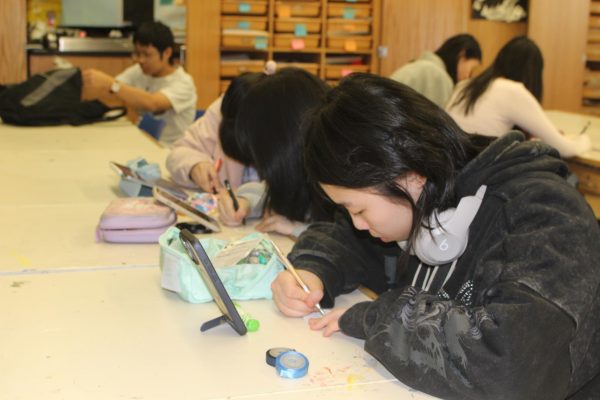The Balancing Act of a Single Mother
A gentle breeze creeps in through the window. It swiftly passes by the curtains, and softly between the fingers that tightly move a pencil across a Spanish verb conjugation worksheet. She sits on her narrow, comfy bed while completing the instructed prompts, until a confused look forms on her face as she turns to her mother for guidance. Her mom, calmly and thoroughly, explains what to do, as she writes every word down. They continue on as they were; with her mother, leaning against the wall, watching her daughter complete worksheet after worksheet.
Over the years, the United States has seen an increase in the number of single parents heading American households. The U.S. Census Bureau indicates that over 12 million American families are single parent families, with nearly 80 percent of them being led by single mothers, making them the “average” single parent. Based on a report from the New York courts’ website, approximately 79 percent of single mothers are employed, with only 31 percent living in poverty. The economic pressure to provide for their children causes them to frequently not be fully engaged in their children’s life, especially in their children’s academic life.
Claudia Cortes, a single mother of one, works at a dry cleaners where she irons and packages clothing. Like many single mothers, she leaves early in the morning to work for countless hours everyday. Due to her lack of presence, she leaves her only daughter, Michelle Cortes, in the hands of Michelle’s aunt until she returns home.
“She works about 10 hours a day,” said sister-in-law Susana Rivera. “She leaves home really early and comes home around 6 p.m. Since she spends most of her time working, I look after my niece as if she were my own.”
The demanding work hours Cortes is faced with leads to her struggle in finding the perfect balance between her work life and personal life; a common issue many single mothers encounter.
“A problem I have is not being able to look after and spend time with my daughter,” Cortes said. “When I have my day off, I try to spend as much time with her as possible by taking her to church with me and then going shopping and eating in the afternoon.”
Ermenia Silva, a single mother who works as a “canner” (a person who collects cans and bottles in exchange for money), is not able to be thoroughly involved in her child’s academic life. Since most of her work hours overlap with their personal schedule, as well as school events and meetings, it can be rather strenuous for busy working mothers to plan, attend, and be involved in every academic moment.
“I don’t have time to attend PTA meetings but I do try to go to every parent teacher conference,” said Silva concerning her only daughter, Stephanie. “I also ask Stephanie how her grades are. Every week, she goes online and checks how much her average has gone up or down. She has always been a good student.”
Students of single-parent families have been shown to do poorly education-wise compared to students from two-parent families. A large number of studies, as reported by the New York courts’ website, have displayed that students from single parent families perform poorer on cognitive functioning tests, score lower on standardized tests, have lower GPAs overall, and complete fewer years of their education.
“I have a hard time with math because of all the formulas you have to learn,” said freshman Michelle Cortes. “To overcome these struggles, I ask for tutoring.”
Despite their adversity in managing time, single mothers still attempt to be a part of every moment in their child’s life. The bond between a single parent and child tends to be stronger than that of two-parent families according to the Ohio State Extension. The complex obstacles and tender moments they share lead to the development of a strong, mutually-dependent relationship.
“I think I’m pretty close to my mom,” Michelle Cortes said. “Regarding my personal life, I sometimes tell her, but I do tell her everything about school. When she helps me with Spanish homework, she usually tells me about her life.”
Despite the statistics and studies demonstrating the education gap that exists between children of single parents and children of two-parents, single mothers still seek to provide their children with a decent lifestyle, at the very least, along with an educational opportunity that would set them up for success in their lives.
“She doesn’t need to worry about money; I will work as much as I need to for my daughter,” said Silva. “Like I tell her, ‘right now, all you have to do is worry about getting good grades, don’t worry about the rest.’ Whether she goes to college or not, I will support her unconditionally, as long as she is stable and happy.”







